May itinerary in Japan Day 1 (Kumamoto Prefecture)
(Tuesday, May 17)
Table of contents
2. Oikami Shrine, Hitoyoshi Castle Ruins
6. Kamada Shoyury / Tateyama Shop
7. Hitoyoshi Railway Museum, Hitoyoshi Station
1. Aoi Aso Shrine
I traveled to Kumamoto prefecture from May 17th (Tuesday) for 2 nights and 3 days.
First, I flew from Haneda Airport to Kagoshima Airport. The planes I used are as follows.
Depart Haneda Airport at 7:40, ANA2471, arrive at Kagoshima Airport at 9:30
When I arrived at Kagoshima Airport, there was a footbath called “Oyattosa” near the bus stop. The great thing about “Oyattosa” is that people in wheelchairs can use the footbath while riding in a wheelchair. I think it’s a great initiative.
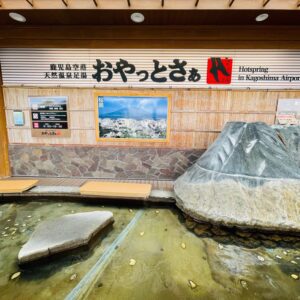
I went to Hitoyoshi City by limousine bus. The limousine bus I used are as follows. Kagoshima Airport is overwhelmingly closer to Hitoyoshi City than Kumamoto Airport, so I used Kagoshima Airport.
Depart Kagoshima Airport at 9:45, arrive at Hitoyoshi IC at 10:37, Fare Yen 1,420
After arriving in Hitoyoshi city, I had lunch and rented a bicycle to see the city of Hitoyoshi. I rented a bicycle at the “Kumagawa Railway Headquarters” next to Hitoyoshi Station. The price was as low as Yen 500 a day.
I visited Aoi Aso Shrine for the first time in Hitoyoshi city tour. Aoi Aso Shrine was founded in 806. The existing main hall, corridor, hall of offerings, hall of worship and tower gate were built from 1610 to 1613. It was built by the founder of the first feudal lord of the Hitoyoshi domain, Nagatsune Sagara, and his chief retainer, Seibei Sagara. It is rare in Japan as a whole that a series of shrines were built at the same time, and it is very valuable. The most characteristic feature is the thatched roof with a high roof and a steep slope. Such an architectural method is unique to the Hitoyoshi Kuma region.
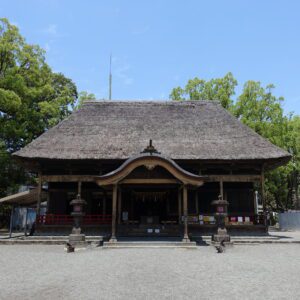
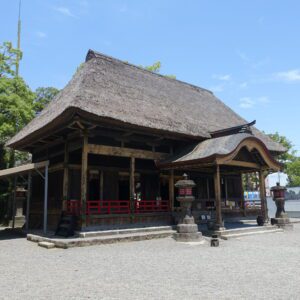
Aoi Aso Shrine was designated as a national treasure in 2008. Aoi Aso Shrine is the first thatched roof shrine and temple to be designated as a national treasure and is also the only national treasure in Kumamoto Prefecture. This is the second national treasure at a shrine in Kyushu after the main shrine of Usa Hachimangu in Oita prefecture.
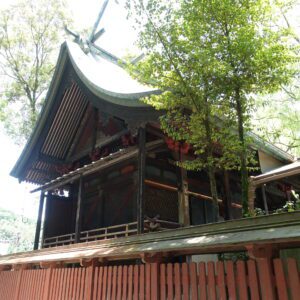
At Aoi Aso Shrine, the worship hall of the national treasure was flooded on the floor during the 2020 Kyushu floods, and the balustrade of Misogi Bridge was damaged. The balustrade is still under repair.
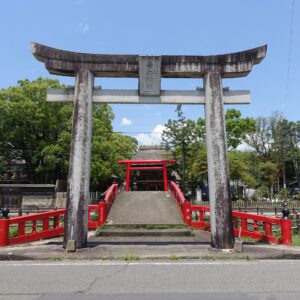
I was impressed by the wonderfulness of the thatched roof gate. It is a 12-meter-high Zen Buddhist style and Momoyama style. Although some of the colors have faded over time, it still conveys the wonderful colors of the past.

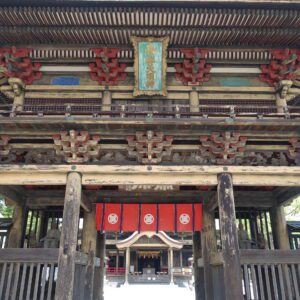
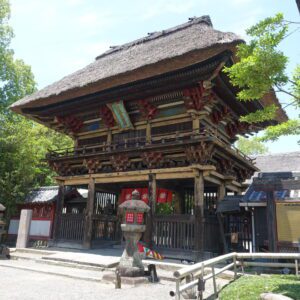
2. Oikami Shrine, Hitoyoshi Castle Ruins
Next to Aoi Aso Shrine, I went to Oikami Shrine, which is about 5 minutes by bicycle. Oikami Shrine is a national important cultural property.
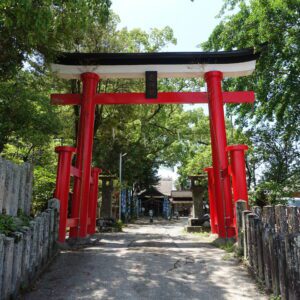
Oikami Shrine was built in 807. The current shrine was built in 1628 by Nagatsune Sagara, the first feudal lord of the Hitoyoshi domain. It retains the Momoyama period-style building method. It is also the battlefield of the Satsuma Rebellion.
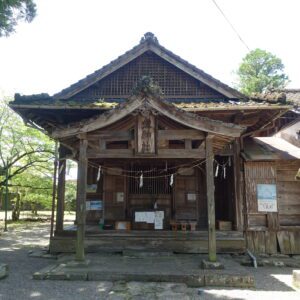
The site of Hitoyoshi Castle, which is located near the Oikami Shrine, is designated as a national historic site. The castle has survived for 670 years since Sagara was assigned to Hitoyoshi-so as an estate steward in the Kamakura period. It has been selected as one of the 100 Fine Castles of Japan. Due to 2020 Kyushu floods, Hitoyoshi Castle was also damaged, so restoration work is currently underway. The Kuma River seen from near the site of Hitoyoshi Castle was very beautiful. I can’t imagine that this beautiful Kuma River caused a catastrophic flood. The Kuma River is one of the three major rapids in Japan along with the Mogami and Fuji rivers.
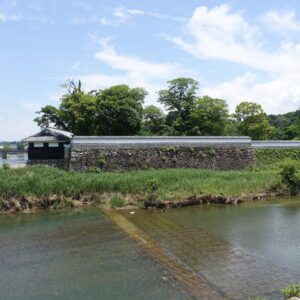
-300x300.jpg)
3. Iwaya-kumanoza Shrine
Next to Oikami Shrine, I went to Iwaya-kumanoza Shrine, which is about 15 minutes by bicycle. Iwaya Kumanoza Shrine was founded by Nagayori Sagara, the first owner of Sagara family, soliciting Kumano Sansho Gongen (god of the three main Kumano shrines) around 1230. It is a national important cultural property.
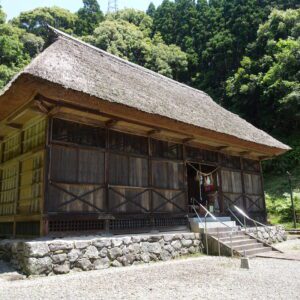
The three main shrines of Iwaya-kumanoza Shrine are believed to have been built in 1727. The stone torii gate was donated in 1701 and is the only one in the Kuma region in the form of a two-part torii gate with a chigo pillars.
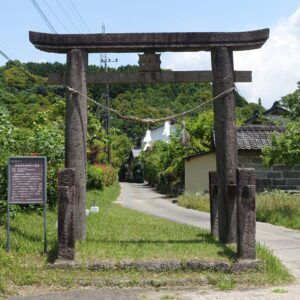
4. bridges, railroad tracks
Due to 2020 Kyushu floods, the Kuma River and its tributaries were flooded and many lives were lost. In addition, the buildings and bridges were destroyed, washed away, and inundated, causing enormous damage. Restoration activities are continuing for both the JR Hisatsu Line and the Kumagawa Railway, but the timing for the restoration of entire section has not yet been decided. About two years have passed since the disaster, and there was a lot of grass on the rail tracks.
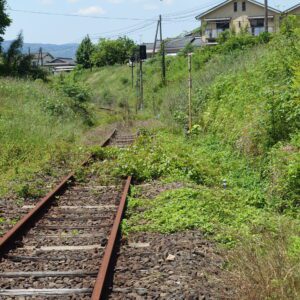
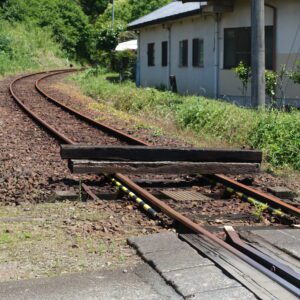
It is estimated that the restoration cost will reach Yen 23 billion in JR Kyushu alone because some bridges have been washed away.
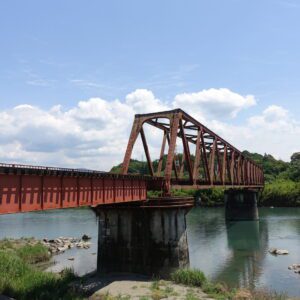
I sincerely pray for the earliest possible restoration of entire section.
5. Gansei-ji Temple
Gansei-ji Temple is about 15 minutes by bicycle from Iwaya-kumanoza Shrine. Gansei-ji Temple was founded by Nagayori Sagara in 1233 and has become the family temple of the Sagara family. Behind the main hall is the Sagara family cemetery. You can see the power of the Sagara clan in Hitoyoshi with a fairly large tombstone. Sagara family is said to be a descendant of Fujiwara no Kamatari, and the name “Fujiwara” is engraved on the tombstone.

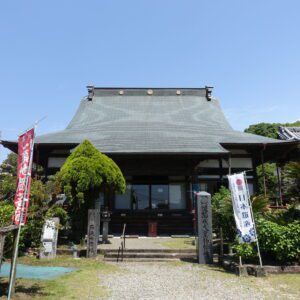
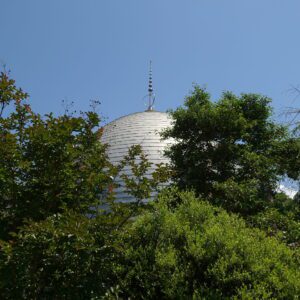
6. Kamada Shoyury / Tateyama Shop
Kamada Shoyury is a miso and soy sauce factory founded in 1931. Kamada Shoyury is about 5 minutes by bicycle from Gansei-ji Temple. We can also tour the factory for free at Kamada Shoyury.
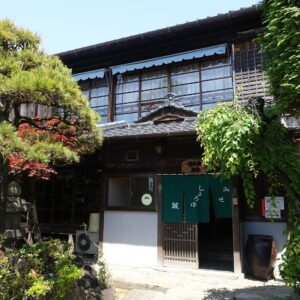
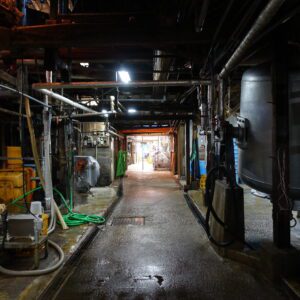
Tateyama Shop is a teahouse located next to Kamada Shoyury. Tateyama Shop is a long-established store founded in 1877, and manufactures and sells Hitoyoshi Kuma tea. Tama-ryokucha, a type of Japanese tea, is the largest producer in Japan in Kumamoto Prefecture. About 30% of Tama-ryokucha is produced in the Hitoyoshi Kuma region. At Tateyama Shop, you can also experience matcha tea and dressing in a kimono.
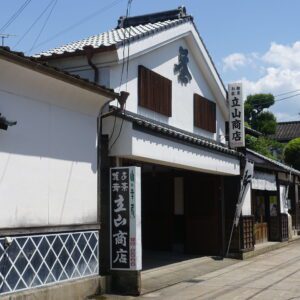
7. Hitoyoshi Railway Museum, Hitoyoshi Station
Hitoyoshi Railway Museum MOZOCA Station 868 is a railway museum that stands next to Hitoyoshi Station. MOZOCA is a dialect of Hitoyoshi and means “small” and “cute”. You can get on the mini train for a fee of Yen 200 each time. Admission is free. Although it is a railway museum, it is for children.
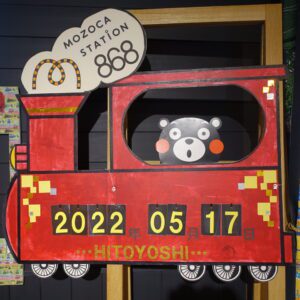
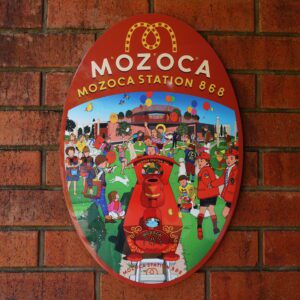

As mentioned earlier, neither the JR Hisatsu Line nor the Kumagawa Railway operates, but Hitoyoshi Station is open for ticket sales. Hitoyoshi Station is a shared station of JR Hisatsu Line and Kumagawa Railway, but the station name of Kumagawa Railway was changed from Hitoyoshi Station to Hitoyoshi Onsen Station in 2009.
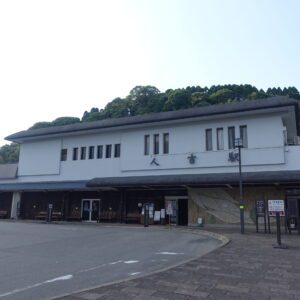
Hitoyoshi Station has the only active stone railway garage in Japan. The stone garage was built in 1911.
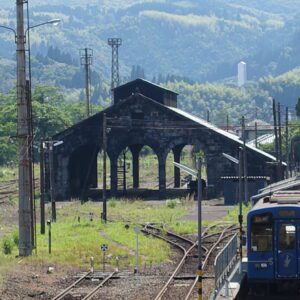

“Rural Symphony”, a sightseeing train of Kumagawa Railway, stopped at Hitoyoshi Station. Along with the stone railroad garage, which has no train to maintain, it seemed to represent a sad situation where it could not be completely restored.
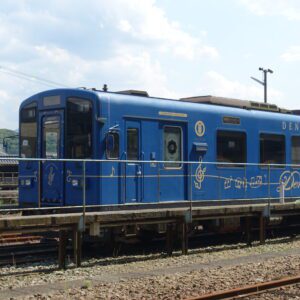
In front of Hitoyoshi Station, there is a “Automaton clock” that has the image of Hitoyoshi Castle. It is a “Automaton clock” with a height of 7m and a strong presence. Every 60 minutes, a total of 17 puppets appear, including a palace and a group of Usudaiko Odori, an intangible cultural property designated by Kumamoto Prefecture, to the melody of the folk song “Kuma no Rokucho” in the Kuma area. It’s a very fun “Automaton clock”, but I felt sad because there was no one in front of Hitoyoshi station. I pray for Hitoyoshi’s recovery.
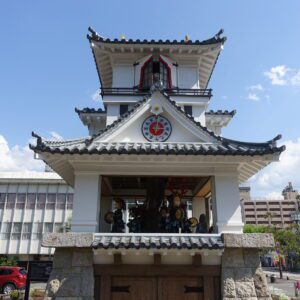
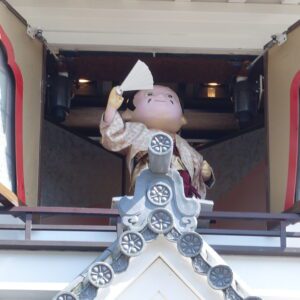
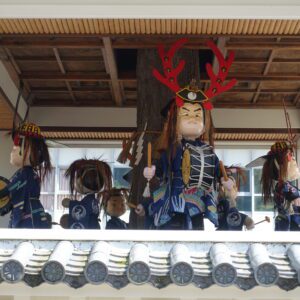
8. Yamada Daio Shrine
At the end of the sightseeing on May 17, I went to Yamada Daio Shrine, which is about 30 minutes by bicycle from Hitoyoshi Station. The main shrine of Yamada Daio Shrine is a national important cultural property built in 1546. Yamada Daio Shrine is one of the few buildings dating back to the Middle Ages. It looks more like a medieval farmer’s house than a shrine.

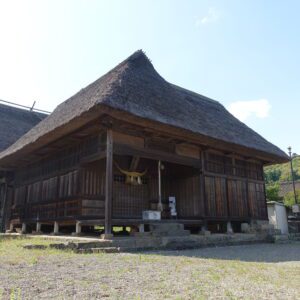
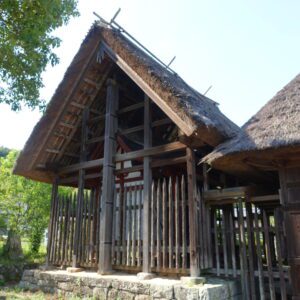
Yamada Daio Shrine is a shrine that enshrines the spirit of Hirakawa Fujitaka, who was the head of Nagayoshisho Yamadamura. Hirakawa family is “Gozoku (baronial family)” who was destroyed by Nagayori Sagara in the “Battle of Chishikibaru”. “Chishikibaru” is written as a field filled with blood. As the name implies, it is estimated that the battle between them was quite horrific. Yamada Daio Shrine and Arata Daio Shrine were built to mourn the spirits of the Hirakawa clan. The name of the Daio (Great King) given to the shrine is the name given to the “Gozoku (baronial family)”.
Note: The departure / arrival times, fares, admission fees of transportation, meal fees, etc. listed in the text are as of the time of writing the BLOG. Please check for yourself when you go on a trip as it may change in the future.